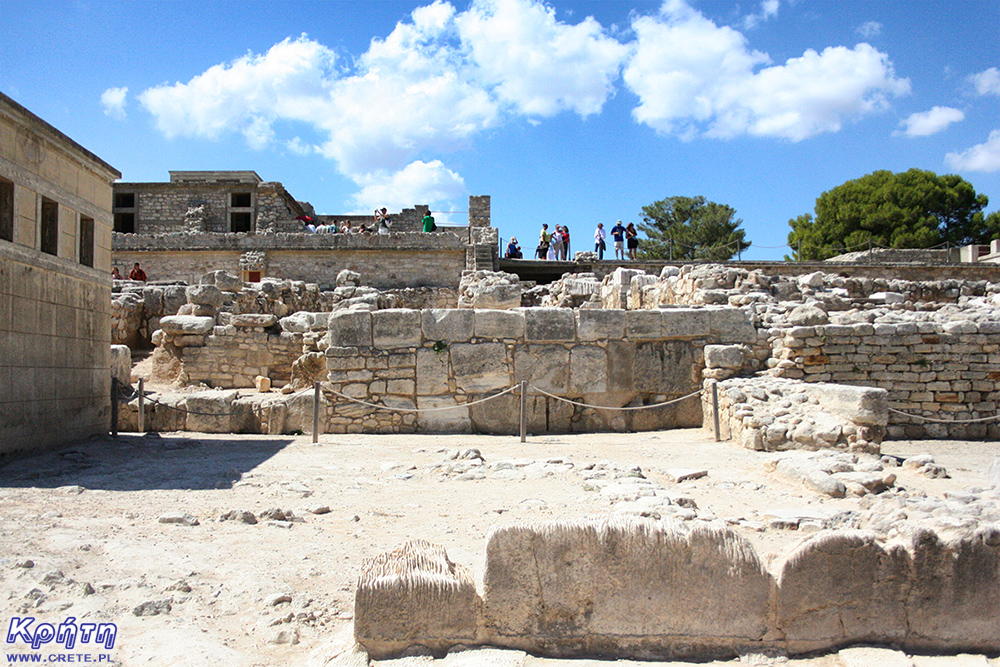
 2022-03-16 18:12:52
2022-03-16 18:12:52
On March 16, 1900, Sir Arthur Evans' workers began the first excavation of what is today the most visited archaeological site in Crete, the Knossos Palace. However, probably not everyone knows that the whole history of this place did not start with the famous Englishman.
Locals have long known that the hill of Kefala, or Knossos, hides the secrets of distant history. The landslides that followed after heavy rains revealed crumbs of a long-extinct civilization. After many centuries, fragments of old walls peeked at the daylight again, and these picturesquely decorated clay vessels clearly suggesting what the earth is hiding in this place.
In April 1879, Minos Kalokairinos, a Greek merchant and antiquarian from Heraklion, gathered twenty workers to dig part of the hill. During these first cursory works, they dug 12 enormous pitos, or enormous clay jugs. For political reasons, however, the work was stopped fairly quickly. Kalokairinos did not keep his discovery secret, so it quickly attracted the attention of many scientists and foreign institutions. Everyone started applying for a concession to conduct excavations.
Not only the French and the Americans fought for the rights to the hill, but also Heinrich Schliemann, who was famous for discovering Troy and Mycenae. Schliemann, in addition to having considerable assets, also had an archaeological nose. In 1883 he made an official request to the then Turkish authorities for permission to start excavations on the Knossos hill. This is another proof of the explorer's instinct, because Schliemann has not even seen the hill personally until then.
The owner of the plot initially demanded 100,000. francs for the opportunity to explore the entire area. However, finally in 1889 it was sold to Schleimann for just 40,000. francs. Where was the catch of such a big discount? In fact, the discoverer of Troy had bought a much smaller fraction than he originally assumed. The first findings covered an area with 2,500 olive trees. However, the clever owner in Schliemann's absence reduced the exposed ground to just 888 trees. Schliemann, when he found out about this creative change, finally gave up on finalizing the transaction. Even if the property was transferred, the famous German would not be given another spectacular discovery, as he died just a year later.

This is where Sir Arthur Evans enters the scene, whom everyone associates with the discovery of the most famous Minoan palace in Crete. Evans regularly visited Crete in the late 19th century, where he conducted regular cave surveys. He, too, began seeking rights to the famous hill that hides the distant history of the Minoans.
In 1898, the Turks withdrew from the island, and Evans took advantage of the political changes that took place in Crete. Supported by a British consul and some Greeks, he started negotiations with the new autonomous government in Chania. Ultimately, Evans for Knossos and the part of the valley that surrounded the hill paid…. 435 lb. The flag of the United Kingdom hung over the newly purchased land, and the workers employed by Evans on March 16, 1900, hammered the first shovels.
Although today many of the works carried out by this British archaeologist are considered by current scientists to be very primitive and brutal, it must be admitted without the slightest doubt that it was Sir Arthur Evans who had the greatest influence on the present nature and appearance of these excavations.
 2022-03-16 18:12:52
2022-03-16 18:12:52
Komentarze
komentarz z
Miejsce które trzeba odwiedzić, byłem i polecam. Oczywiście by był komplet trzeba odwiedzić muzeum w Heraklionie.
komentarz z
Wyjątkowe miejsce, byłam zwiedziłam prawie całą Kretę.
Wypełnij poniższy formularz aby dodać komentarz
lub kliknij w poniższy link aby skorzystać z możliwosci komentowania przez facebooka:
https://www.facebook.com/crete.poland/posts/10158449843372551